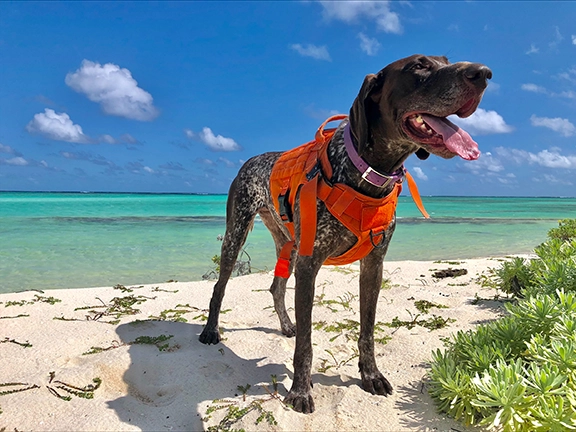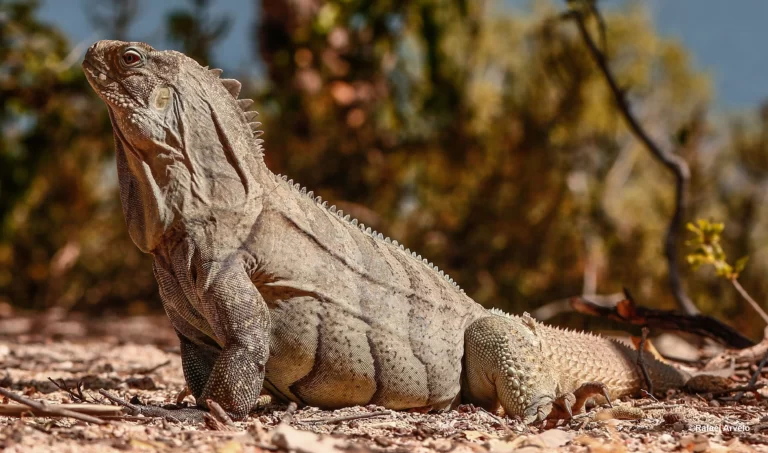Community Conservation: Motagua Spiny-tailed Iguana Project
IIF grant recipients Johana Gil and Daniel Ariano of Reserva Natural Heloderma and their team have been very busy this year with the Motagua Spiny-tailed Iguana (Ctenosaura palearis) project. They’ve been tracking two iguanas in particular, designated “Gilberto” and “Poseidon,” to capture data about their movements and energy expenditure. So far, they’ve discovered that “Poseidon” roams more widely than “Gilberto,” although both have ventured out up to about 200 meters from where they spend most of their time. That’s a good hike for an iguana with a snout-to-vent length of only about 20 cm!


Planting Habitat
The team has also been working on habitat restoration. The group and volunteers are growing seedlings of a variety of native tree species that the iguanas rely on for food and shelter in a tree nursery they established. Once the plants have developed good growth, the team distributes them to owners of private reserves for planting. They will also be planting in areas of the Reserva Natural Heloderma that need it, improving the habitat for the iguanas and other wildlife.
Iguana Gardens
Johana, Daniel, and their team have also implemented an innovative way to involve the community in protecting Motagua Spiny-tailed Iguanas: Iguana Gardens! People in communities where the iguanas are threatened volunteer to set up safe havens in their yards, designed with many places to hide, climb, bask, and even nest. The iguanas can take refuge in these gardens and protect themselves from predators.
The first iguana garden was established at Don Chente’s house in Antombran, Huite, Zacapa (seen below, left). This was clearly the perfect choice: Don has been sheltering and providing food for a population of 35 Motagua Spiny-tailed Iguanas on his property for more than 35 years! He is a true palearis protector, and hatchlings and juveniles are often seen in his garden, sheltered from both humans and cats that might hunt them. Hurray for Don!
The second iguana garden is at the house of Gilberto Salazar in the village of El Arenal, Cabañas, Zacapa (below, right). He has created an iguana haven with hiding places, shade and sunny spots, supplemental food, and the Pitayo Organ Pipe Cactus (Stenocereus pruinosus) that these iguanas live among in the wild. Thank you, Gilberto!


Left: Don puts up some fencing in his Iguana Garden. The garden provides iguanas with protection, lots of places to hide, shade, and basking sites.
Right: Gilberto’s Iguana Garden incorporates native cactus to provide climbing and hiding spots for iguanas.
Education and "Iguaneros"
Involving the community in conservation is a vital part of long-lasting success, and Johana, Daniel, and their team have established some meaningful connections. This year they have continued to provide environmental education about the iguanas native to their area to children at local schools, including the eagerly anticipated Iguana Drawing Contest (below, left and center). The team provides drawing materials, information about Ctenosaura palearis iguanas, and photos, and the kids work hard to produce their works of art. And the winners receive iguana-themed prizes!
Iguana enthusiasm is also clear in the Iguaneros Soccer Team (below, right)—it’s front and center in the logos on their snazzy uniforms! Having this team has been very successful and motivating for local kids. They have a great time and show their community pride. It also encourages them to continue attending the community workshops and learning about the iguanas in their backyard, especially what they can do to help save them.



Powerful Friends
Johana, Daniel, their volunteers, and the communities are building a caring force to help save the Critically Endangered Motagua Spiny-tailed Iguana from extinction. The International Iguana Foundation is very proud to provide grant funds to support this dedicated team as they make a real difference for this species!





